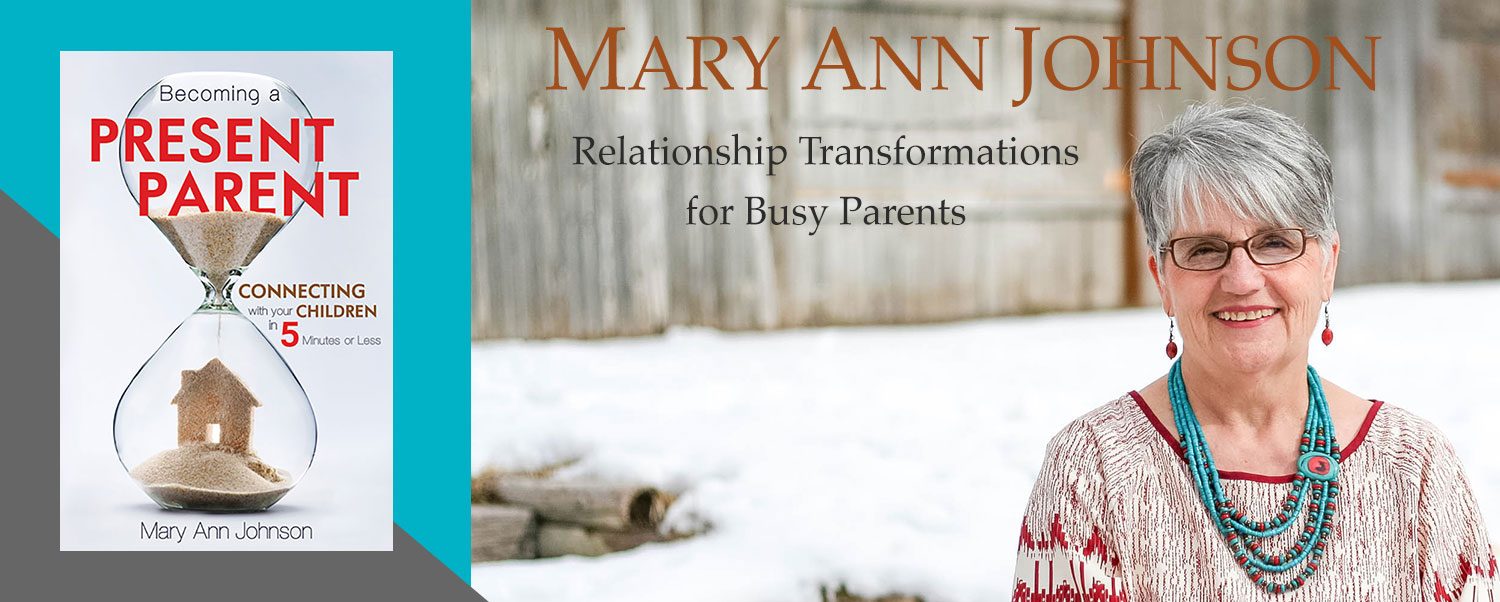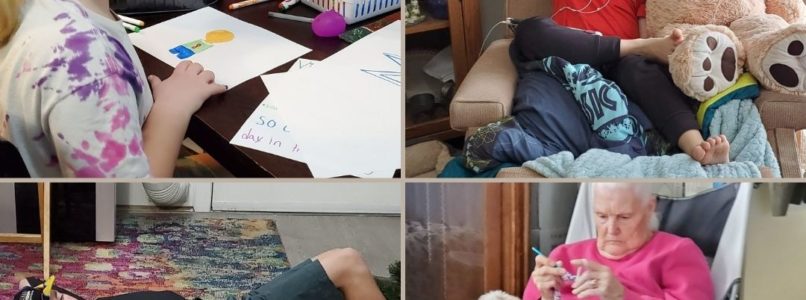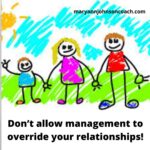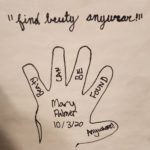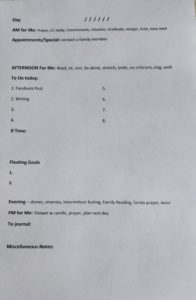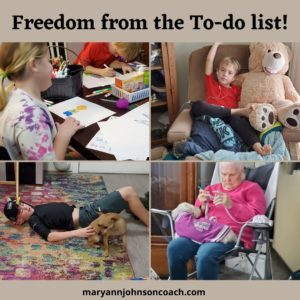 Sometimes I think back
Sometimes I think back
to when I was a child. There are good memories and sad memories. But one thing I return to most often is the time freedom I had. I’m not talking about the freedom to roam, although I had that. I’m talking about the space to sit, think, do nothing, or create without the knowledge in the back of my mind of other things that would eventually need to be tackled. There wasn’t a to-do list that was always present.
The to-do list didn’t exist. There were chores and homework, but they weren’t on a list. My mom would cajole me into doing my duties. I had to do them, and that could feel onerous, but it wasn’t hanging out on a list in my brain. My brain was free.
I know that of all the things I enjoyed as a child, this was the most wonderful. The irony, though, was that I didn’t know anything else. Never having experienced the mental list, I couldn’t appreciate not having one; I couldn’t cherish the freedom of it. It is as I have said many times, “You can’t know until you get there.”
My mom has Alzheimer’s, and, in some ways, has become a child again. She can sit, fully intent on her crochet, read her scriptures for hours, and occasionally ask questions. She has lost many things to this disease, but she has gained back the freedom of those lost childhood days – the freedom to sit and think, do nothing, or create without the endless to-do list.
A few years ago, my husband and I went on a cruise to Alaska. I took my computer and my phone because when you write, there are deadlines. When you have a large family, you’re frequently needed. Fortunately for me, my computer and my phone didn’t work on the ship. My husband wasn’t in good health, and so he spent lots of time resting. We didn’t go too far from the boat.
That all turned into a tremendous blessing. It gave me an enormous amount of free, by myself with no list, time. One morning I got up early, grabbed my book, and went down to the ship’s center where there were tables, chairs, and lots of treats. I walked in and came to a dead halt at the quiet. No one was there besides a few staff and me. I realized with significant impact that I didn’t have a single thing I had to do that day, not one thing! I began sobbing.
Isn’t that remarkable that the lack of a mental list brought me to tears? Now the truth of my life is that I am not going to be on many cruises. I won’t find myself alone, with nothing to do, very often. But it is vital to find ways to manage the list and be free, if only for a short time. It is healing and exhilarating.
Tools to manage your to-do list
1. Be sure that every day your list has some self-care on it. Mine is consistent and has been for over 60 years – take a shower before bed. Sing. Think. Close my eyes and meditate. Rest! Hot water is a must.
2. Sort your list effectively. There are many ways to do this. Find what works for you. For me, it looks like a one-half sheet of paper with the have-to’s listed at the top and bottom – my morning routine and my evening routine. Then a numbered list of the most important things I must do. Then there is a section called – ‘If Time.’ If I get time, I do those things, and if not, they move to another day. Then there is a section called ‘Miscellaneous Notes’. As I have thoughts of stuff I need to do, that aren’t on my list, I write them here. It is the parking spot for my brain clutter. I feel good knowing I won’t forget them, and I evaluate their importance when making my list for the next day. Some things drop off. This process limits the number of items on the to-do list each day.
3. Prioritize. Pick the top three things from the list. Circle them in red or highlight them. Maybe you had clarity when you began, and your three are already written at the top. If that’s all you get done, it will feel like a success. My goal is to do what matters and not get overwhelmed.
4. Track what is done. I know one woman that has a DONE list. That’s too much work for me, but it’s effective for her. Me, I cross them off. Very satisfying! Tracking helps you visually see at the end of a busy day that, yes, you did get the important things done.
5. Leave email, Instagram, your Facebook feed, Tick Toc, untouched until you have given yourself at least one hour on your to-do list. Our best time is usually earlier rather than later. Don’t get sidetracked.
6. Before bed, identify the one thing you are getting up for. I have found it much easier to get up when I go to bed with clarity on what I will do first thing after I get up and have finished my morning routine. It makes the morning battle with the bed easier to win.
Unless we can regularly go on a cruise or another vacation without Wi-Fi, phone access, or kids, we probably won’t experience the mind freedom of our childhood days. But that doesn’t mean we can’t experience relief from the constant mental to-do list. Find list management tools that work for you, and you will be healthier, more in control, and have more peace of mind.
